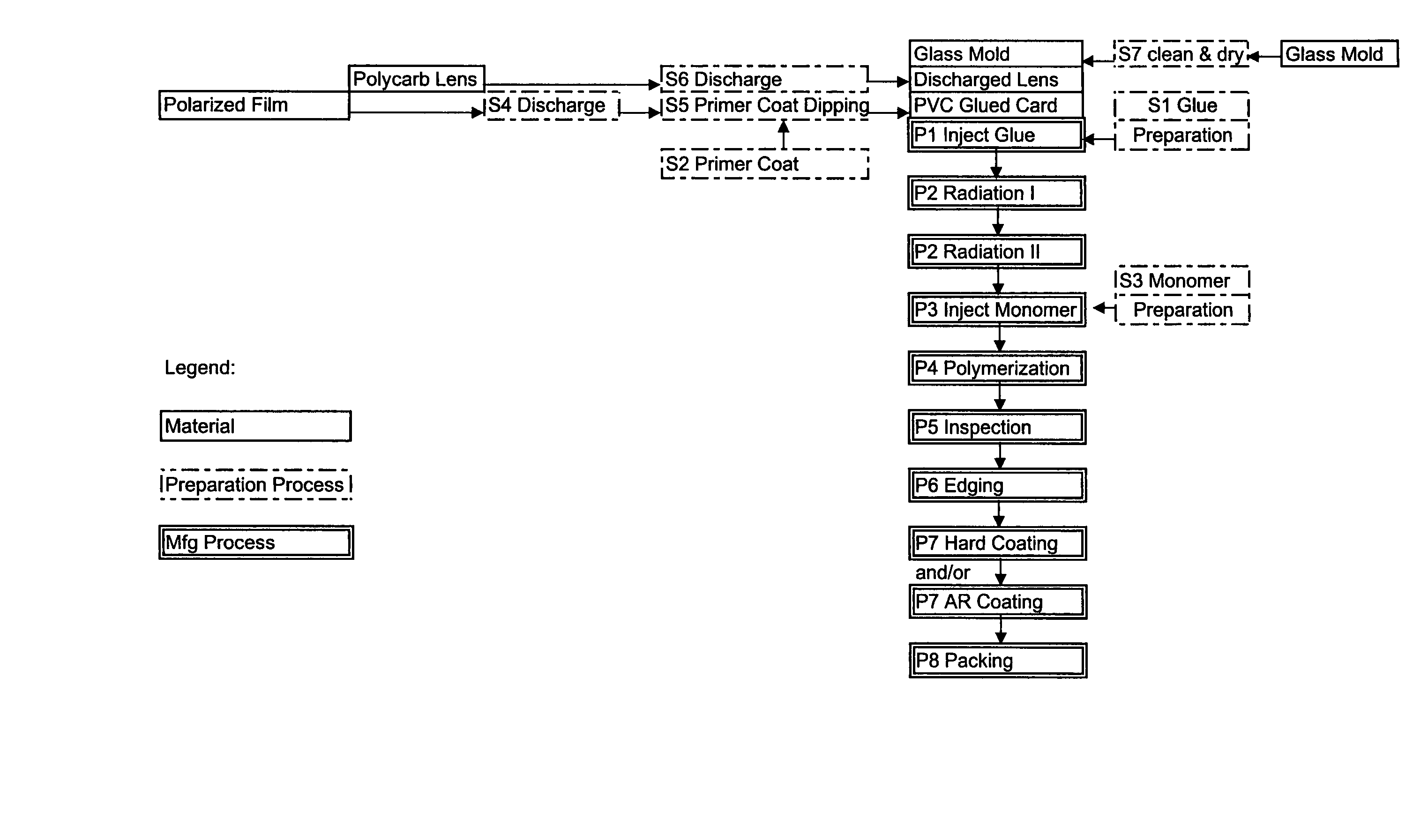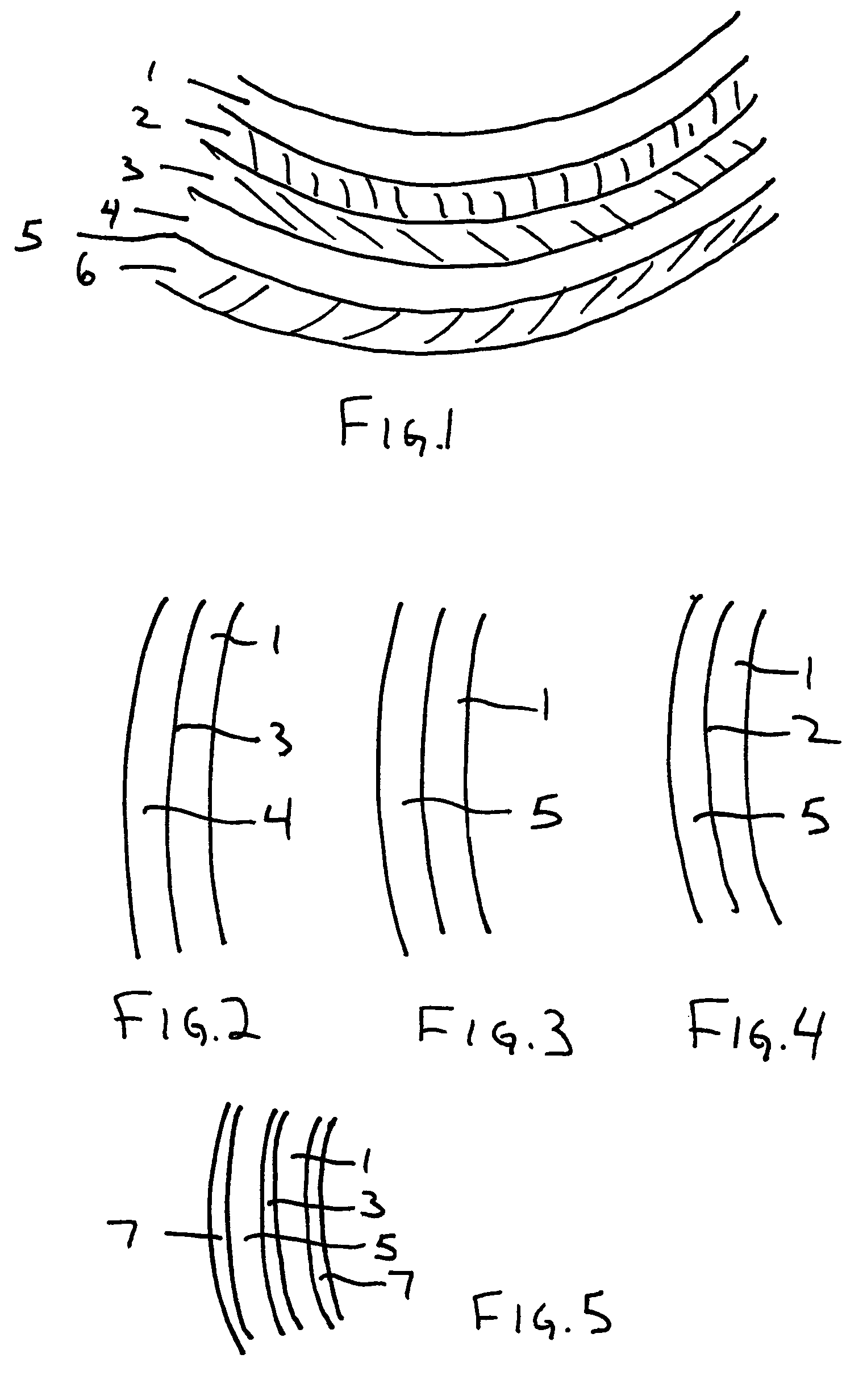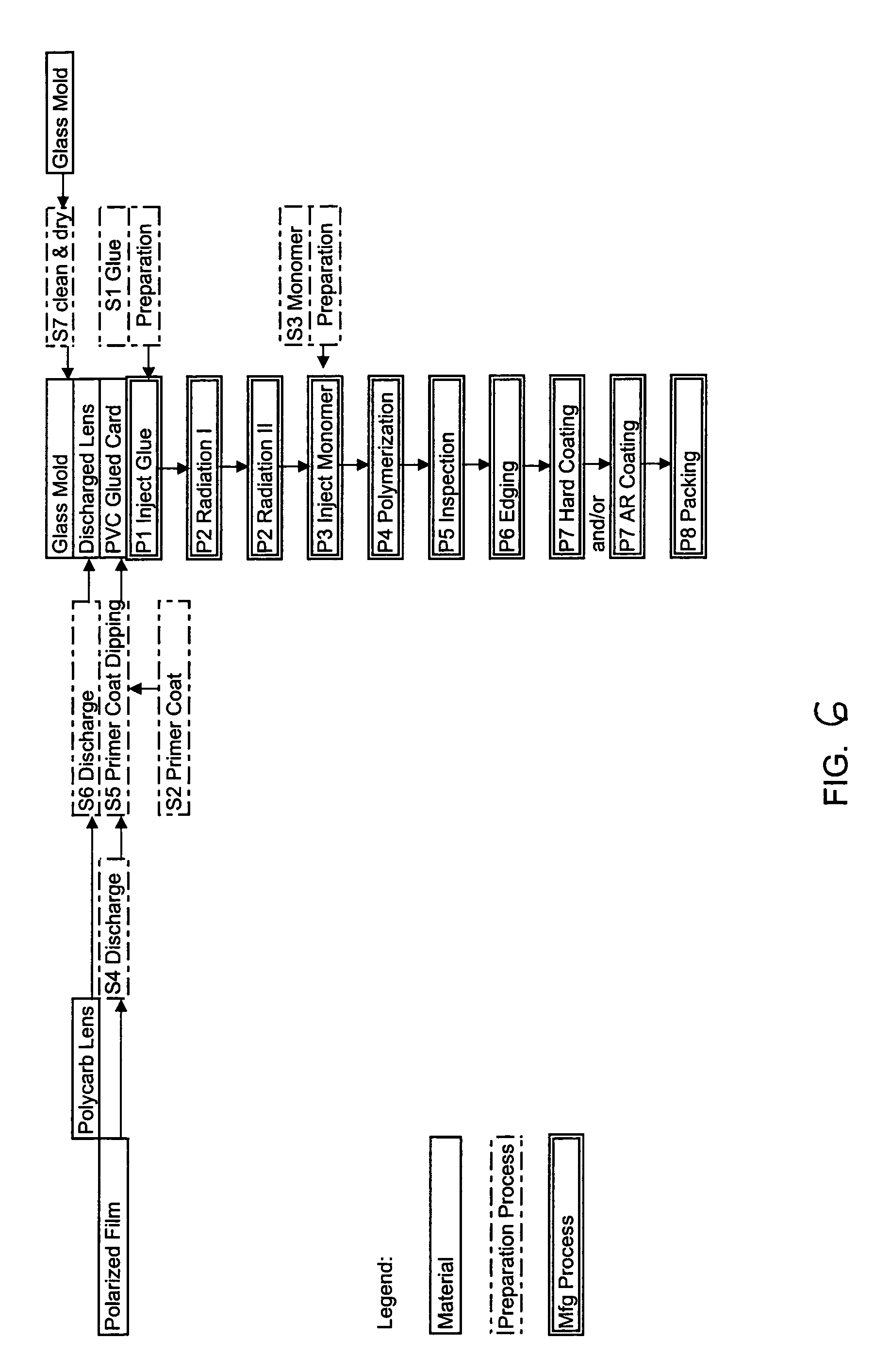Method of forming polarized or photochromic lenses by fusing polycarbonate with other plastic materials
a technology of polycarbonate and plastic materials, applied in the field of forming polarized or photochromic lenses by fusing polycarbonate with other plastic materials, can solve the problems of large amount of light transmitted, easy scratching, and relatively unstable optic curve, and achieve the effect of less inner stress and improved optical quality
- Summary
- Abstract
- Description
- Claims
- Application Information
AI Technical Summary
Benefits of technology
Problems solved by technology
Method used
Image
Examples
example 1
[0062](S1) Adhesive glue: Adhesive glue was loaded into an injection tank and the bubbles remove.
[0063](S2) Primer coat solution: 60 parts by weight of a coating material, such as a high boiling acrylate; e.g., aliphatic urethane acrylate oligomer were taken with 1 part modified acrylamide and mixed together by stirring at 21° C. for 5 min. in a sealed environment not exposed to air or oxygen.
[0064](S3) Monomer: Thermosetting monomer (such as CR39, 1.56 etc., available from PPG US or Nihon Yushi Japan) was mixed with an IPP initiator and stored until ready for use at under −20° C.
[0065](S4) The corona discharge was applied.
[0066](S5) Polarized film: The film (available from Talex, TNK, Polateco etc., Japan) was held, preferably using a “no finger touch” device holder with which both sides of the lens or film are exposed to the corona discharge in a clean and safe manner, and the outside surfaces exposed steadily to a corona discharge unit (MultiDyne™ corona treating system, availabl...
example 2
[0071](P1) Glue injection: The glass mold II (S8) was placed at a holder stand with the front side downward. The PVC glued card (S6) was overlapped at 180 degrees on the glass mold and 0.8 gram of glue was injected at generally the center of the PVC glued card. The polycarbonate lens (S7) was overlapped onto the PVC glued card and the lens pressed until glue was evenly distributed and applied.
[0072](P2) Radiation: The glued lens (P1) was cured on the convex side for 3 minutes and concave side for 3.5 minutes.
[0073](P3) Monomer injection: The new glass mold II (S8) was placed in a holder stand, front side downward. 2.7 gram of (S3) monomer was injected onto the glass mold (S8). the radiation cured lens (P2) was overlapped on top and maintained horizontally and kept horizontally in an oven tray.
[0074](P4) Polymerization: The lens (P3) was polymerized in an oxygen-free oven for 18 hours as per a controllable program.
[0075](P5) Separation and Drying: The polymerized lens (P4) was taken ...
example 3
[0081]Examples for glue curing at radiation.
[0082]Note: Curing factors (distance, power and time) are changeable provided the total curing energy second-mwatt / cm2 is enough. UV light: A commercially available UV light with major wavelength between about 340–400 nm was used. Metal halide: A commercially available metal halide lamp with major wavelength between about 365–420 nm was used. The light boxes were installed with hot air exhaust to prevent the polarizer from being damaged (should be less than about 100 degrees Celsius).
[0083]Table 1 below shows the experiment number, procedure and final cure details.
[0084]
TABLE 1Exper.No.PrecureFinal cure1Step 1. One 150 W UV light (15 cm far) fromStep 1. 300 W UV light (15 cm far) from PCpolarizer side for 20 sec.lens side for 3 minutesStep 2. Two 20 W UV light (15 cm far) fromStep 2. 300 W UV light (15 cm far) fromPC lens side for 20 sec. or longerpolarizer side for 3.5 minutes(Or do step 2 before step 1)2Simultaneously, do both steps 1 an...
PUM
| Property | Measurement | Unit |
|---|---|---|
| thicknesses | aaaaa | aaaaa |
| thicknesses | aaaaa | aaaaa |
| thickness | aaaaa | aaaaa |
Abstract
Description
Claims
Application Information
 Login to View More
Login to View More - R&D
- Intellectual Property
- Life Sciences
- Materials
- Tech Scout
- Unparalleled Data Quality
- Higher Quality Content
- 60% Fewer Hallucinations
Browse by: Latest US Patents, China's latest patents, Technical Efficacy Thesaurus, Application Domain, Technology Topic, Popular Technical Reports.
© 2025 PatSnap. All rights reserved.Legal|Privacy policy|Modern Slavery Act Transparency Statement|Sitemap|About US| Contact US: help@patsnap.com



